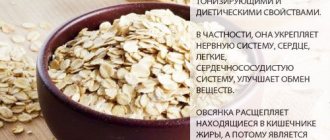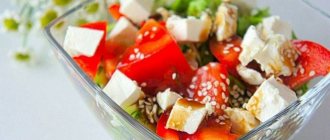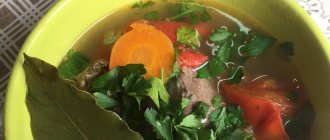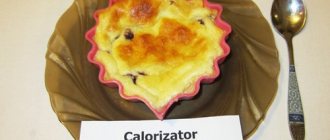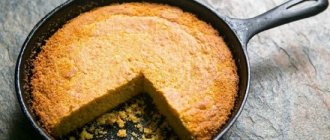Sweet straws are a childhood delicacy for many. How exciting it was to crunch cookies of such an unusual shape. Today there is no shortage of such pleasure: it can be purchased in almost any retail chain and at a fairly affordable price. It is worth remembering that, despite its simple appearance (thin sticks 12-20 centimeters long), the calorie content of sweet straws is quite high. One hundred grams of the finished product contains 372 kilocalories. Based on these characteristics, it becomes clear that you need to consume this bakery dessert in moderation.
Cooking technology
Mix the egg and sugar and beat thoroughly. Add salt, vegetable oil and flour. Knead the dough until it holds its shape and does not spread out. We send the finished mass into the depths of the refrigerator for at least thirty minutes.
After the specified time, remove the dough from the cold and form straws out of it. You can do this in any way. The easiest way is to roll out the dough very thinly (4 millimeters is the limit!). Cut strips into noodles (also no more than 4 millimeters). We form thin strands from the resulting ribbons. Place them on a sheet and put them in the refrigerator again (for about five minutes).
While the pieces are cooling, we turn on the oven and heat it up. Prepare a baking tray. You can lightly grease it with vegetable oil, or cover it with special baking paper (or a silicone mat).
Place the resulting pieces on the prepared baking sheet. We also lightly grease the top of the product with vegetable oil: this way the sugar will stick to it more reliably. Lightly sprinkle the future sweet straw with granulated sugar and place it in a preheated oven.
At a temperature of 220 degrees, baked goods will be ready in 7 minutes. Turn off the oven, but do not remove the cookies: let them sit inside for a few more minutes and brown more. At this stage of cooking, care must be taken to ensure that the products do not burn. Don't leave them alone in the kitchen.
Cake made from store-bought straws
And now, an interesting and simple cake recipe that can be easily and simply turned into reality without any extra effort. Agree, sometimes we, on the contrary, want something sweet, but we don’t have the strength (or desire) to bother with baking for a long time. This recipe is just for those housewives who are wondering what can be made from store-bought sweet straws. We hope that the culinary masterpiece presented below will fully satisfy them.
Ingredients for the no-bake cake:
- sweet straw - 400 grams;
- boiled condensed milk - 1 can;
- a pack of butter - 180 grams;
- vegetable oil (for greasing foil);
- foil - for convenient formation of the cake.
Analog of store-bought straws
This cookie can be given even to children - its composition is so natural. A minimum set of products used in the recipe is available in every home. So, the ingredients for baking homemade sweet straws:
- 1 cup flour (a little more for shaping the products);
- half a glass of sugar;
- one egg;
- a tablespoon of vegetable oil without aroma;
- a pinch of salt (to tone the taste).
Cooking method
We remove the butter from the depths of the refrigerator so that it melts slightly and becomes more plastic. Beat it together with condensed milk until the resulting sweet cream becomes shiny and homogeneous.
We prepare a sheet of foil for further use: grease it with vegetable oil without aroma. It will be more convenient to use a silicone brush. Place the finished cream on top of the vegetable oil. The length of the place where it is applied must correspond to the size of the confectionery product. Width - no more than ten centimeters. Place straws on top of the cream (in one row) and lubricate them well. We put the next batch of cookies, decorate them with butter cream again and cover them with a new layer of the so-called cake layer. Each subsequent row of the future cake is narrowed: we put a couple of straws less. Repeat the action until all the ingredients are gone. The top layer must be coated. Don't forget about the edges - we also generously decorate them with butter cream. You shouldn’t feel sorry for it if you want to end up with a softer dessert. Not enough cream will cause the cake to be too dry.
We complete the formation of the dessert and carefully cover it with foil. It is worth compacting the cake slightly and only then putting it in the freezer for three hours.
After the specified time, remove the finished confectionery product from the freezer and carefully remove all the foil from it. Place on a wide dish and leave for thirty minutes (to thaw). Now our cake will be easily separated with a knife. Cut it into pieces and invite your favorite household members for a tasting.
If you are confused by the lack of additional decorative elements on the finished dessert, or you don’t like the appearance, correct the situation with grated chocolate: grate the bar on a fine grater and sprinkle the cake on all sides. You can use cocoa powder: dust the entire surface of the product with it.
Want to get your cake faster? Break into strips and mix with cream. Further everything is as in the recipe.
Straws belong to the category of bakery products with humidity not exceeding the norm. When making straws, straight dough is used. Visually, these are thin, crispy sticks of medium length. The modern food industry produces this product, which is classified into two main types: salty and sweet.
Straws: calorie content and nutritional composition
The energy value of the straw is very high, the average component of which is 361 calories. The calorie content of sweet straws is slightly higher than that of salty ones. Straws with additional use of cereal crops have the lowest energy value.
Nutritional value indicators are determined by the main components of the straws used for baking. Key Nutrient Ratios:
- Belkov - 9.1.
- Carbohydrates - 68.2.
- Fat - 5.2.
Useful and harmful properties
Unlike regular bread, straws are better absorbed, saturating the body with B vitamins, minerals, and vegetable proteins.
Straws are an excellent snack option, which, in combination with milk, yogurt, juice or tea, can become a complete replacement for a second breakfast or afternoon snack in children's and adult meals.
The most useful type of straw, due to its significant content of coarse dietary fiber, is straw with bran - it can be consumed in moderation when losing weight.
Attention! Due to their significant calorie content, sweet, vanilla poppy or salty straws are not suitable for use in dietary nutrition.
Sweet types of straws are contraindicated for diabetes, overweight and obesity.
Due to the high salt content in salted straws, excessive consumption of this product contributes to water retention in the body and the appearance of edema.
Eating straw in large quantities can cause intestinal dysfunction.
Are straws harmful?
Consuming straws in reasonable quantities will not cause great harm to health. Sweet straws are strictly prohibited for people suffering from diabetes, obesity of any degree and those losing weight. Salty types of this product retain fluid in the tissues of the body, which leads to the development of swelling. Excessive consumption of flour products, which also includes straw, provokes the development of intestinal dysfunction.
CHEMICAL COMPOSITION AND NUTRITIONAL ANALYSIS
Nutritional value and chemical composition of “Sweet straw”.
The table shows the nutritional content (calories, proteins, fats, carbohydrates, vitamins and minerals) per 100 grams of edible portion.
| Nutrient | Quantity | Norm** | % of the norm in 100 g | % of the norm in 100 kcal | 100% normal |
| Calorie content | 372 kcal | 1684 kcal | 22.1% | 5.9% | 453 g |
| Squirrels | 9.1 g | 76 g | 12% | 3.2% | 835 g |
| Fats | 6.1 g | 56 g | 10.9% | 2.9% | 918 g |
| Carbohydrates | 69.3 g | 219 g | 31.6% | 8.5% | 316 g |
| Organic acids | 0.2 g | ~ | |||
| Alimentary fiber | 4 g | 20 g | 20% | 5.4% | 500 g |
| Water | 10 g | 2273 g | 0.4% | 0.1% | 22730 g |
| Ash | 1.3 g | ~ | |||
| Vitamins | |||||
| Vitamin B1, thiamine | 0.19 mg | 1.5 mg | 12.7% | 3.4% | 789 g |
| Vitamin B2, riboflavin | 0.06 mg | 1.8 mg | 3.3% | 0.9% | 3000 g |
| Vitamin E, alpha tocopherol, TE | 2.9 mg | 15 mg | 19.3% | 5.2% | 517 g |
| Vitamin RR, NE | 3.6 mg | 20 mg | 18% | 4.8% | 556 g |
| Niacin | 1.8 mg | ~ | |||
| Macronutrients | |||||
| Potassium, K | 152 mg | 2500 mg | 6.1% | 1.6% | 1645 g |
| Calcium, Ca | 24 mg | 1000 mg | 2.4% | 0.6% | 4167 g |
| Magnesium, Mg | 38 mg | 400 mg | 9.5% | 2.6% | 1053 g |
| Sodium, Na | 233 mg | 1300 mg | 17.9% | 4.8% | 558 g |
| Phosphorus, Ph | 99 mg | 800 mg | 12.4% | 3.3% | 808 g |
| Microelements | |||||
| Iron, Fe | 2.3 mg | 18 mg | 12.8% | 3.4% | 783 g |
| Digestible carbohydrates | |||||
| Starch and dextrins | 55.4 g | ~ | |||
| Mono- and disaccharides (sugars) | 13.9 g | max 100 g | |||
| Saturated fatty acids | |||||
| Saturated fatty acids | 1.3 g | max 18.7 g |
The energy value of Sweet Straw is 372 kcal.
Main source: Skurikhin I.M. and others. Chemical composition of food products. .
** This table shows the average levels of vitamins and minerals for an adult. If you want to know the norms taking into account your gender, age and other factors, then use the My Healthy Diet app.
Product calorie analysis
SHARE OF BZHU IN CALORIES
Ratio of proteins, fats and carbohydrates:
Knowing the contribution of proteins, fats and carbohydrates to calorie content, you can understand how well a product or diet meets the standards of a healthy diet or the requirements of a certain diet. For example, the US and Russian Departments of Health recommend 10-12% of calories come from protein, 30% from fat and 58-60% from carbohydrates. The Atkins diet recommends low carbohydrate intake, although other diets focus on low fat intake.
If more energy is expended than it is received, the body begins to use up fat reserves, and body weight decreases.
Try filling out your food diary right now without registration.
Find out your additional calorie expenditure for training and get updated recommendations absolutely free.
DATE FOR ACHIEVEMENT OF THE GOAL
Sweet straw
rich in vitamins and minerals such as: vitamin B1 - 12.7%, vitamin E - 19.3%, vitamin PP - 18%, phosphorus - 12.4%, iron - 12.8%
- Vitamin B1
is part of the most important enzymes of carbohydrate and energy metabolism, providing the body with energy and plastic substances, as well as the metabolism of branched amino acids. A lack of this vitamin leads to serious disorders of the nervous, digestive and cardiovascular systems. - Vitamin E
has antioxidant properties, is necessary for the functioning of the gonads and heart muscle, and is a universal stabilizer of cell membranes. With vitamin E deficiency, hemolysis of erythrocytes and neurological disorders are observed. - Vitamin PP
is involved in redox reactions of energy metabolism. Insufficient vitamin intake is accompanied by disruption of the normal condition of the skin, gastrointestinal tract and nervous system. - Phosphorus
takes part in many physiological processes, including energy metabolism, regulates acid-base balance, is part of phospholipids, nucleotides and nucleic acids, and is necessary for the mineralization of bones and teeth. Deficiency leads to anorexia, anemia, and rickets. - Iron
is part of proteins with various functions, including enzymes. Participates in the transport of electrons and oxygen, ensures the occurrence of redox reactions and activation of peroxidation. Insufficient consumption leads to hypochromic anemia, myoglobin deficiency atony of skeletal muscles, increased fatigue, myocardiopathy, and atrophic gastritis.
more hide
You can see the complete directory of the most useful products in the appendix - a set of properties of a food product, the presence of which satisfies a person’s physiological needs for the necessary substances and energy.
Vitamins
, organic substances required in small quantities in the diet of both humans and most vertebrates. Vitamin synthesis is usually carried out by plants, not animals. A person's daily requirement for vitamins is only a few milligrams or micrograms. Unlike inorganic substances, vitamins are destroyed by strong heat. Many vitamins are unstable and are “lost” during cooking or food processing.
Description
Snacks, chips, bagels, puffed wheat, popcorn and other quick snacks are becoming increasingly popular these days. This is due not only to the ever-increasing rhythm of life of a modern person, but also, undoubtedly, to the excellent taste of the finished products. It’s a blessing when such products contain mostly natural, high-quality raw materials, although recently manufacturers have not hesitated to add all sorts of food additives with the threatening letter E, which do not bring anything good to our health.
Sweet straw belongs to the category of just such products, but its composition does not look so sad. As a rule, to make sweet straws, conscientious manufacturers use wheat flour (not necessarily the highest grade), a fat component (margarine, cooking oil or, very rarely, butter), baking powder, eggs or melange, table salt, and also, without fail, granulated sugar or powder.
In terms of its taste characteristics, sweet straws are not inferior to many other types of products for a quick snack. It has a pleasant sweetness, crispy and crumbly texture. The calorie content of sweet straws is approximately 372 kcal per 100 grams of finished flour product. That is, it turns out that this is the nutritional value of the entire standard package of this product.
Sweet straws are not only a great way to quickly satisfy your hunger, but also a wonderful ingredient for preparing a variety of dishes. For example, if you chop sweet straws, the resulting crumbs can be used as a topping for cakes or pastries, as well as a base or layer for desserts. Sweet straw crumbs go amazingly well with ice cream, sorbet, mousse or soufflé. In addition, you can decorate already prepared sweet dishes with it by simply inserting crispy golden sticks into the prepared dessert.
By the way, along with sweet straws, manufacturers also produce a salty version of this excellent product. Salty straws are one of the favorite snacks among lovers of the foamy drink - beer. In addition, it is so attractive with its taste that it is simply impossible to stop at just one stick.
Actually, excessive consumption of straws is the probable harm of this product to human health. As you know, high-carbohydrate foods not only have increased nutritional value, but also have the ability to be deposited in the human body as extra pounds. The calorie content of sweet straws is also quite high, so it is recommended to indulge yourself with this tasty delicacy infrequently and in limited quantities.
Composition and beneficial properties of salted straw
A product that is not suitable for diets and fasting days and has a large number of calories, salted straw also contains vitamins and minerals that are beneficial for the human body. Its chemical composition contains: vitamins B1, B2, E, PP, as well as useful minerals potassium, calcium, magnesium, iron, phosphorus and sodium.
Harm of salted straws
Despite all the benefits of salted straws, one must also take into account that this product contains a high salt content, which can lead to stomach upset and salt deposits.
Use of salted straw in cooking
Salty straws are used on their own not only as a snack for beer at parties and while watching matches of your favorite teams and as a snack, but also as an integral part of complex sandwiches (what else can you use to make a swan neck from olives?). It will make an original frame for baskets in which you can serve salad if you braid the straws with green onions or other herbs. Straws that are a little thicker than usual are great as skewers for cutlets and rolls.
Method for preparing salted straws at home
Of course, it is more common to buy salted straws in any store, but you can achieve the same taste, even much better, by preparing the treat at home (calorizator). For the dough you need to take half a kilo of flour, 100 grams of butter, a packet of baking powder, 1 egg, a teaspoon of sugar and an yolk to coat the straw, coarse salt for sprinkling.
From the above ingredients, knead the dough, let it rest a little, roll out, cut into thin strips, from which roll into flagella. Place on a baking sheet, brush with yolk, sprinkle with salt and bake for 15 minutes.
Calorie content of Sweet Straws is 372 kcal.
Energy value of the product Sweet straw (Ratio of proteins, fats, carbohydrates):
Protein: 9.1 g (~36 kcal) Fat: 6.1 g (~55 kcal) Carbohydrates: 69.3 g (~277 kcal)
Energy ratio (b|w|y): 10%|15%|75%
Benefits and harms
Eating sweet straws in moderation is good for health. This snack contains magnesium, iron, potassium, calcium, sodium and phosphorus, as well as vitamins B1, B2, E and PP. True, it is not advisable to overuse such a snack, since due to its significant calorie content it can cause excess weight.
Contraindications
In moderation, these dry bread products will not cause any significant harm, but if you overdo it, you can easily gain a couple of extra pounds. Sweet, and especially glazed, straws should not be consumed by diabetics, as they contain a lot of sugar.
Sweet straws are a childhood delicacy for many. How exciting it was to crunch cookies of such an unusual shape. Today there is no shortage of such pleasure: it can be purchased in almost any retail chain and at a fairly affordable price. It is worth remembering that, despite its simple appearance (thin sticks 12-20 centimeters long), the calorie content of sweet straws is quite high. One hundred grams of the finished product contains 372 kilocalories. Based on these characteristics, it becomes clear that you need to consume this bakery dessert in moderation.


